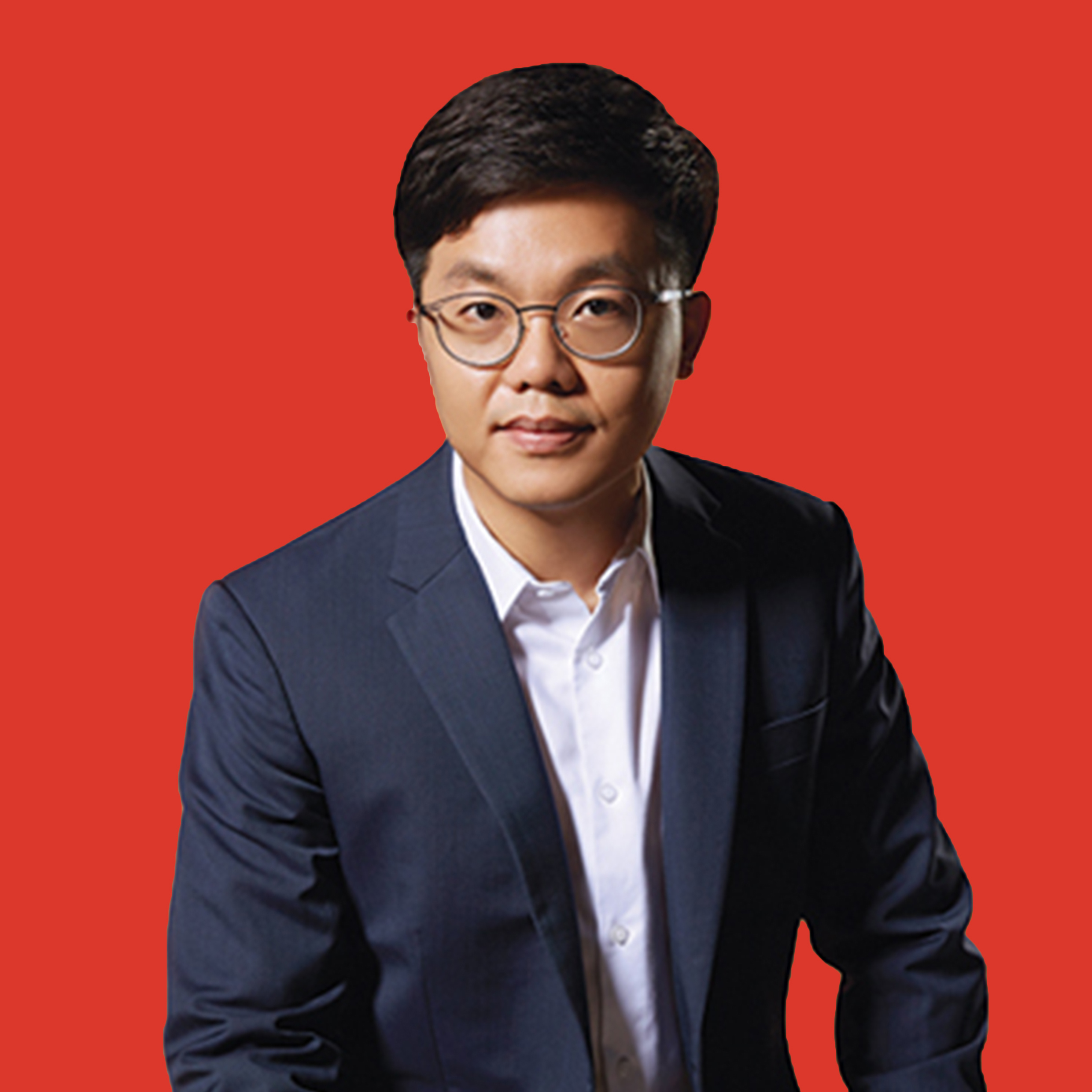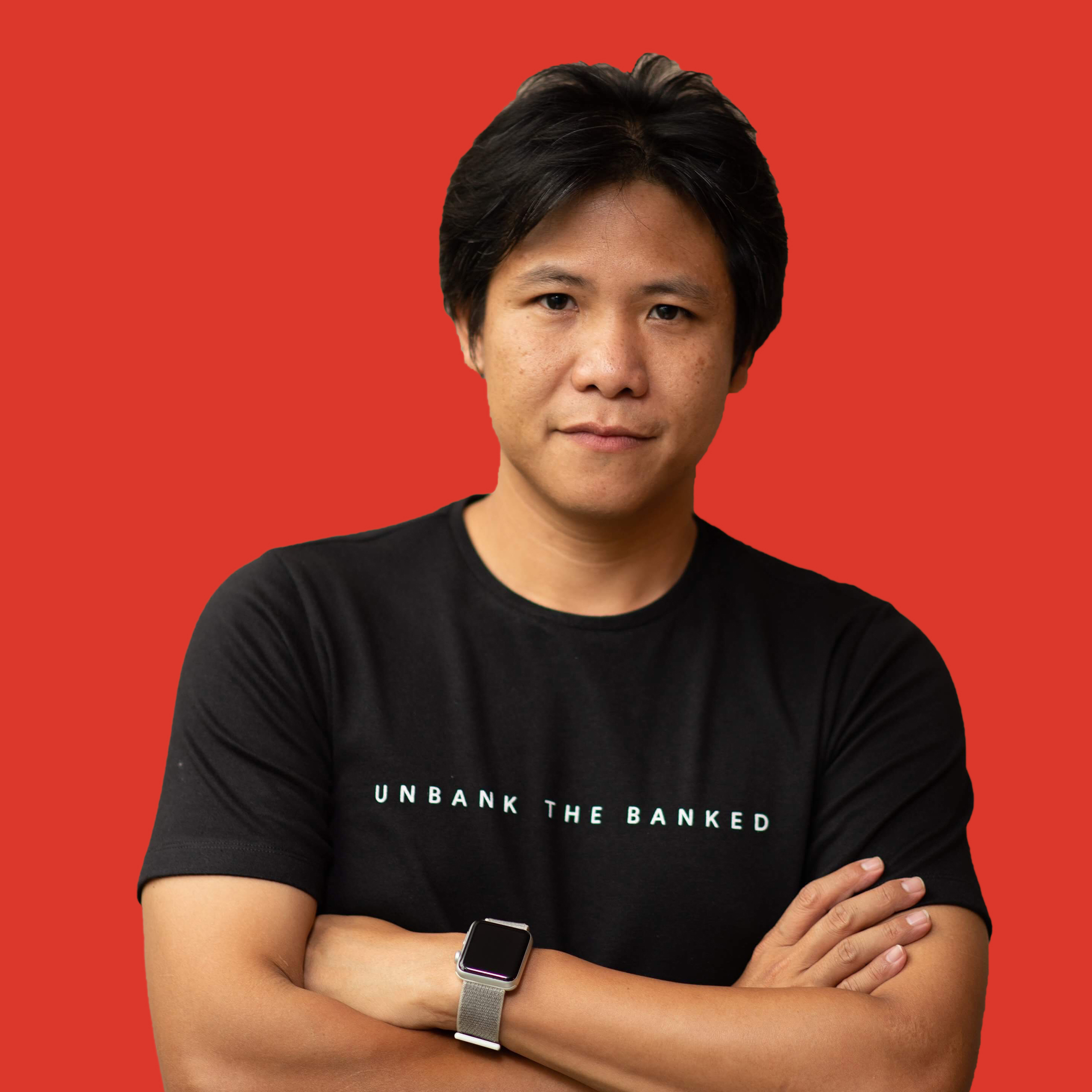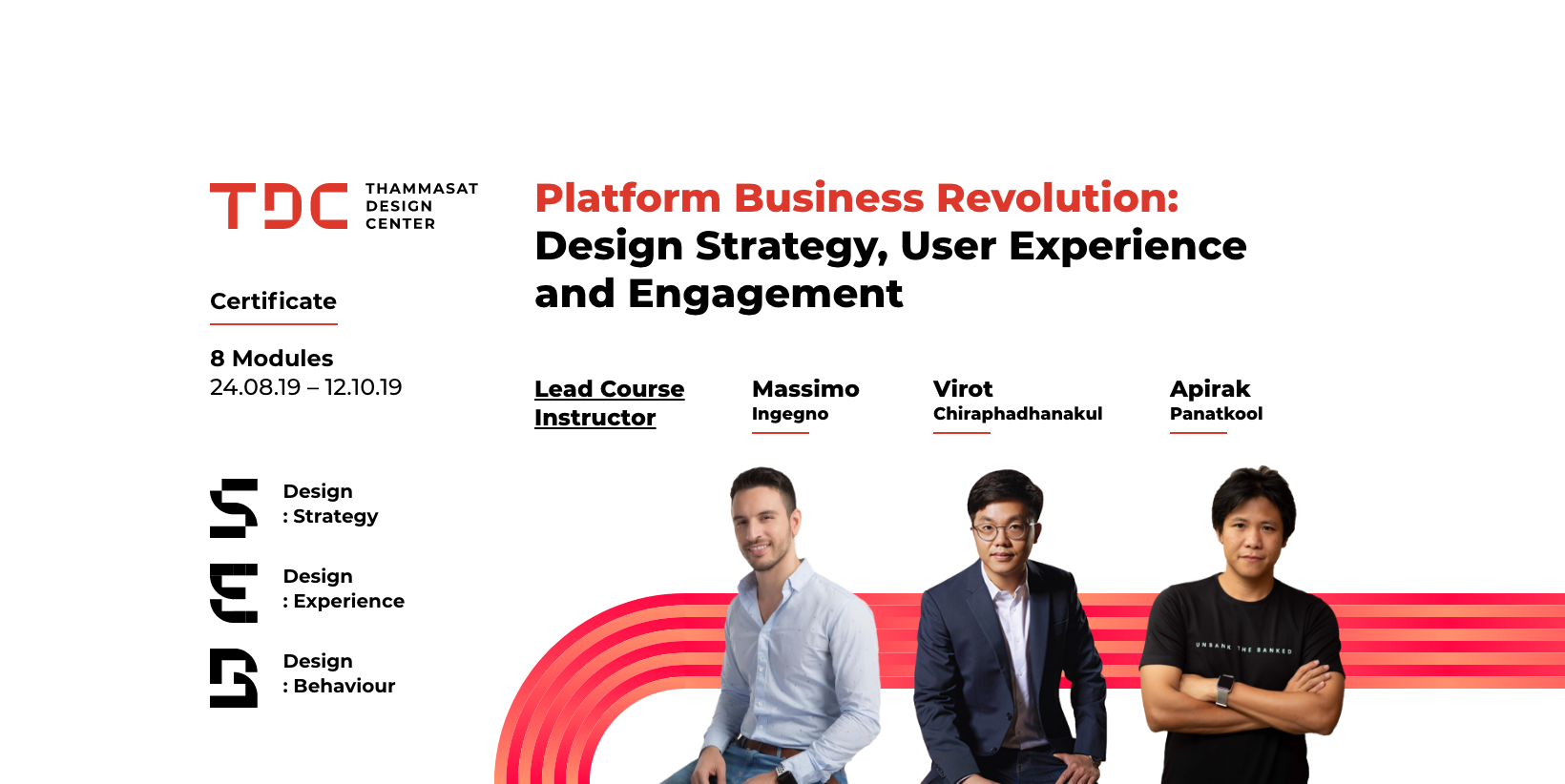Course Overview
Facebook, PayPal, Alibaba, Airbnb, Grab - these seemingly disparate companies have disrupted entire industries by harnessing a single phenomenon: the platform business model.
Multisided platforms function very differently from traditional businesses. They match and empower producers and consumers by using technology, and rather than creating value directly, orchestrate interactions between users.
Taught by both leading university instructors and practitioners from different disciplines and industries, Platform Revolution: Design Strategy, User Experience and Engagement is the first comprehensive certified course in Thailand that unveil the secrets behind the most successful platforms.
The course recognises that in an ever-increasingly connected, digital and competitive world, the nature of business design in the past decade has profoundly changed. Solving customers’ need is no longer sufficient: Data is the new dollar, and customers expect seamless and engaging experiences. Building successful platforms requires the combination of design, psychology, business strategy, data science and product management.
Course Instructors
Massimo Ingegno
Director of TDC
Gamification
and Behaviour Design expert
Virot Chiraphadhanakul
Founder, Skooldio
Ex-Facebook Data Scientist
Apirak Panatkool
Founder, UX Academy
Course Results
At the end of the course, participants will know how to:
- Think strategically in a world of platforms through “ecosystem” thinking;
- Harness the power of data and inform design choices;
- Gather insights from users, and turn them into product features;
- Design a compelling and engaging user experience.
Format, Date and Time
- Date: 24/08/2019 - 12/10/2019
- Time: 9.30 - 12:30, 13:30-16:30 (6 hours)
- Location: Learn Hub (directions)
- Frequency: this course will run twice a year
- TU Credits: 3
Certificate
Participants who complete the entire program (8 modules) will receive an official Platform Business Design Strategy certificate from Thammasat University.
8 Modules
24 August 2019
Facebook, PayPal, Alibaba, Airbnb, Grab - these seemingly disparate companies have disrupted entire industries by harnessing a single phenomenon: the platform business model. Multisided platforms function very differently from traditional businesses. They match producers and consumers by using technology. This module covers the foundations of what a multi-sided platform are and how they function. Learners will discover:
- The different typologies of platforms;
- Why platforms always win against pipeline (traditional) businesses;
- In which ways platforms disrupt industries;
- How the sharing economy opens up new business opportunities and bring societal changes;
- Monetisation strategies
31 August 2019
This shift in value creation has not only created new business models, but completely changed business design and strategy. The orchestration of high-value interactions between platform participants has become the focus of attention of business designers. Learners will discover:
- The life-cycle of multi-sided platforms;
- The key functions of multi-sided platforms;
- The core design principles of platforms;
- The most cutting-edge tools to help design and optimise platforms;
- The role of technology
7 September 2019
-
Experience Design:
What is an “Experience”? How does it impact the end result and development process? Learn from real case studies and the world of Experience.
-
Design process:
Design Thinking is not the only process designers use. Design has many processes, including Google Design Sprint, Lean UX, and Service Design Thinking. Discover the popular processes and learn when best use them.
-
Continuous Discovery:
Design plays a very important role in Agile environments but design practice is not included in Agile processes such as Scrum, XP or Kanban. Learn wow and when to add design in Agile.
14 September 2019
-
UX / UI / Graphic Design:
What should we expect from UI Designers? What makes it different from UX and Graphic design?
-
Design Principle: “Don’t let the user think”:
Users should use applications without thinking. Understanding how our brain processes images, we can design intuitive interfaces that users understand with minimum effort.
-
Drawing wireframe:
Wireframes are basic tool for communication. Business/Developers or Designers should draw it correctly, and not just to follow a process.
-
Information Architecture (IA):
Users cannot process large amounts of information at a given time. How do we prioritize information? Learn the art and science of organizing and labelling websites and online communities to support usability and findability.
28 September 2019
Creating intuitive and user-friendly digital experiences is often not enough. How do we motivate and empower users? And when functions are the same, what differentiates a platform from their competitors? The most successful digital platforms are addressing these questions by applying insights from psychology and behavioral science into their marketing and design solutions. The intensive workshop will introduce the topic of Gamification and Behavior Design and teach participants how to use some of the most effective tools to design persuasive, engaging, and even fun experiences. This module prepare participants to:
- Learn about Gamification and Behavior Design as a way to craft fun and engaging experiences;
- Appreciate the importance of Gamification in the context of platform businesses.
- Analyse an existing platform businesses through the lenses of motivation.
- Ideate and brainstorm ideas and concepts on how to initiate a Gamification design
Project.
5 October 2019
Where do great ideas come from? How can you make sure your product solves your users’ problems? User research is an iterative, cyclical process in which observation identifies a problem space for which solutions are proposed. It focuses on understanding user behaviors, needs, and motivations.
-
Why user research?:
A story of how user research impacts products and what happens if we create products without a better understanding of user behavior.
-
Research Planning:
What does a research plan guarantee success? What are the key ingredients to encourage your stakeholders (product managers, developers, marketers and executives) along with your research journey?
-
User Research Methods and Tips:
What research methods can you choose from? What are some practical tips and tricks? How do you approach users and ask them smarter questions?
-
Hands-on research:
Let’s put the theory in practice right away. Find your users and learn by doing as UX researchers do on a daily basis.
12 October 2019
Every work niche has its own lingo. Agile, scrum and backlog are just the tip of the iceberg when it comes to product management. If you plan to be a product designer, a developer, a UX researcher, a data analyst, a product marketing manager, you will have to deal every single day with product managers. What do most PMs believe? How do they approach the business world? How do they add value in a tech organisation?
This module will give you an understanding of what is the prism that PMs use to look at their day to day work, what are the principles that guide them and how they leverage each member of the team with the clear goal to delight customers while hitting the agreed business KPI.
The module will:
- Describe how the PM interacts and leverages the whole team
- Analyse major tenants of the “product philosophy” that PMs use to guide the team
- Teach you practical (and fun!) aspects of the product role in interactive sessions



